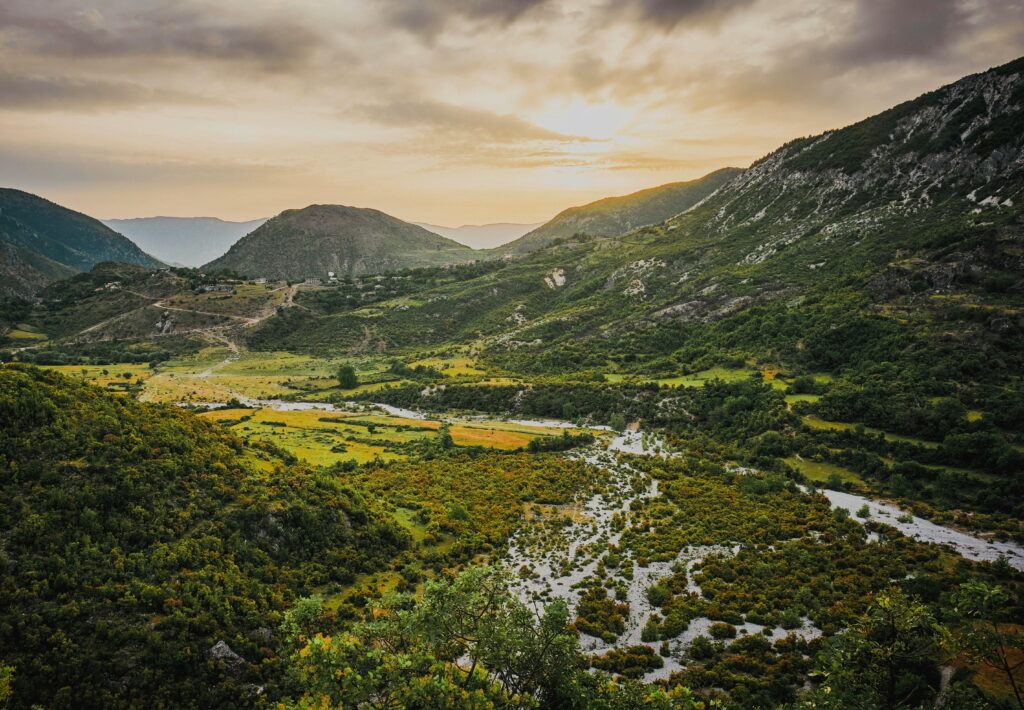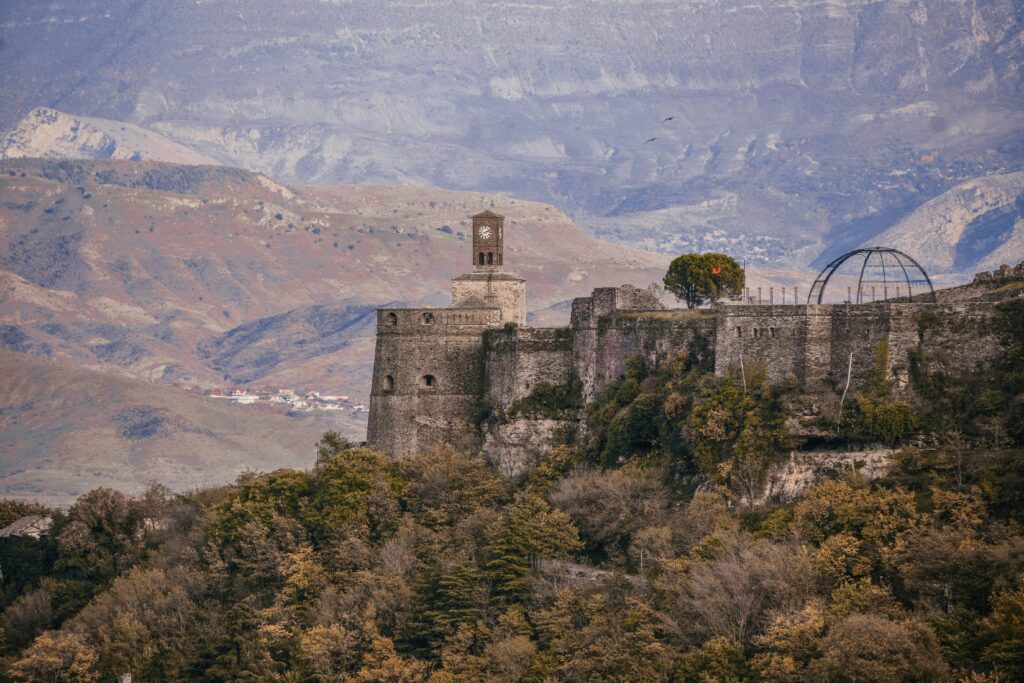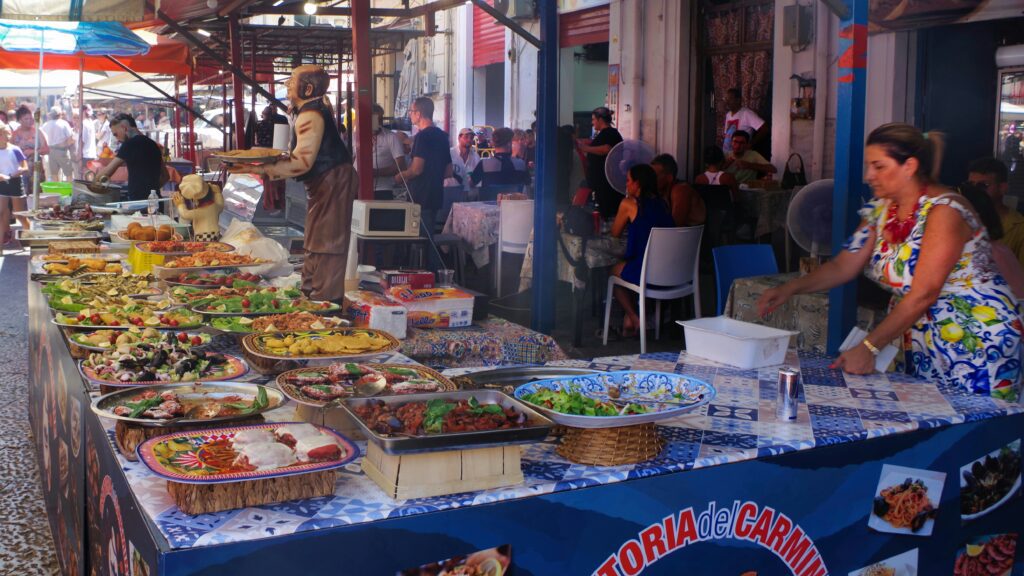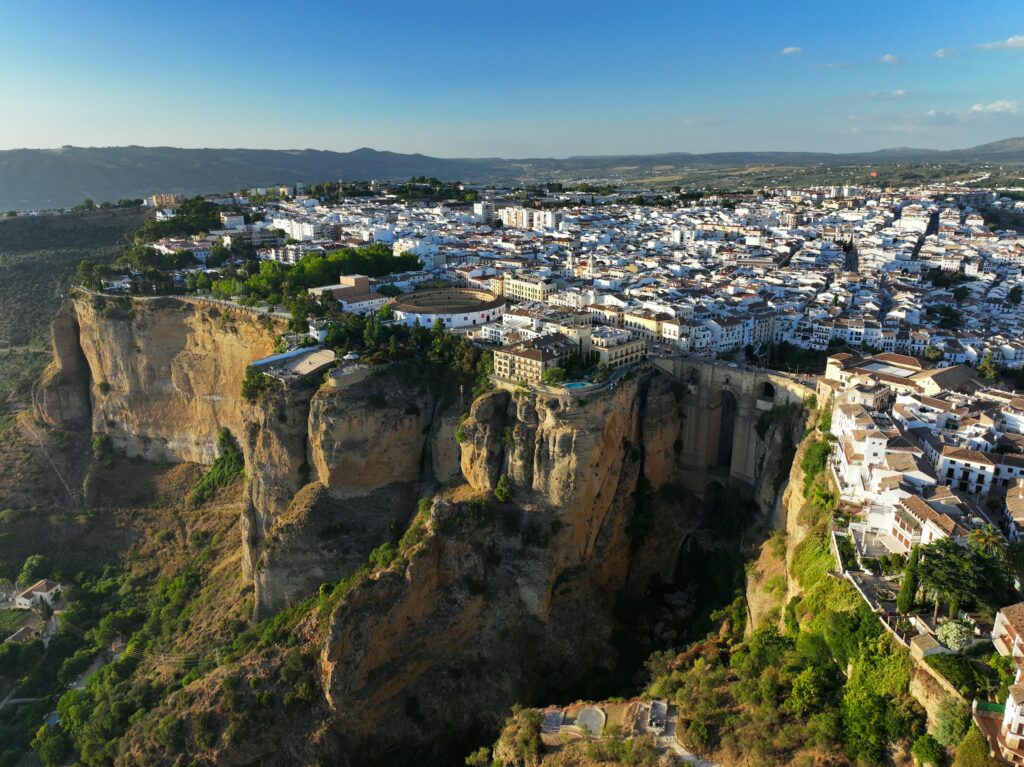Introduction
Stepping onto Gjirokastër’s cobblestone streets feels like entering a living museum. The moment I arrived, the scent of wood-fired bread mingled with the crisp mountain air, and the sound of copper artisans hammering intricate designs echoed through the alleys. This UNESCO World Heritage Site—one of Albania’s four—blends Ottoman-era charm, dramatic landscapes, and untouristed authenticity. In this best Gjirokastër travel guide, I’ll share firsthand tips to explore the city like a local, from hidden courtyards to must-try dishes.

Why Visit Gjirokastër?
The city’s slate-roofed bazaars and hilltop fortress are stunning, but its soul lies in surprises: the Cold War bunker-turned-museum, where whispers of Albania’s communist past linger, or the elderly craftsmen hand-pressing copper as they’ve done for centuries. Unlike crowded Balkan hotspots like Dubrovnik or Kotor, Gjirokastër’s slow pace lets you savor espresso in a 300-year-old Ottoman house or hike to the Ali Pasha Bridge at sunset, with only the sound of the Drino River below.
Key Highlights
- Gjirokastër Castle (9 AM–6 PM, 500 ALL/$5): More than just panoramic views, this fortress houses an eerie arms museum in its tunnels, displaying everything from medieval weaponry to Enver Hoxha’s personal memorabilia.
- Skenduli House (Tours at 10 AM/2 PM, 300 ALL/$3): A perfectly preserved Ottoman-era home with secret escape routes and a hidden room where women once observed male guests unseen.
- Zekate House (9 AM–5 PM, 200 ALL/$2): A masterpiece of Albanian architecture, with frescoed ceilings and Drino Valley vistas from its twin towers.
Pro Tip: Visit in spring (April–June) or fall (September–October) for mild weather (18–25°C/64–77°F) and fewer crowds. Summer can be scorching, with temperatures reaching 35°C (95°F), while winter offers a rare, snow-dusted charm.
Map of Gjirokastër
Planning Your Trip
Best Time to Visit

How to Get There
- By Bus: From Tirana (4 hours, 800 ALL/$8, multiple daily departures from the South and North Bus Terminals) or Sarandë (1.5 hours, 400 ALL/$4). Buses are comfortable but can be crowded in summer—arrive early to secure a seat.
- By Car: A scenic drive via the SH4 highway (rental cars from €25/day). The route from Tirana passes through the dramatic Llogara Pass—stop for photos at the panoramic viewpoint.
- Nearest Airport: Tirana International Airport (TIA), 230 km away. Private transfers cost €100–€120, or take the airport bus to Tirana and switch to a Gjirokastër-bound bus.
3-Day Gjirokastër Itinerary

Day 1: Historic Heart
- Morning: Start at Gjirokastër Castle. Climb the clock tower for sunrise views over the Drino Valley, then descend into the chilling Cold War bunker—bring a jacket, as the tunnels are damp.
- Afternoon: Lunch at Kujtimi Restaurant (try tavë kosi, a baked lamb and yogurt dish). Tour Skenduli House, where the guide will demonstrate how the hidden harem room worked.
- Evening: Walk 30 minutes to Ali Pasha Bridge for sunset. The 18th-century Ottoman bridge glows gold in the fading light. Dinner at Kodra Restaurant—their fërgesë (pepper and cheese stew) is legendary.
Day 2: Culture & Cuisine
- Morning: Wander the Old Bazaar, where artisans sell handmade filigree jewelry and copperware. Pop into Gjirokastër Ethnographic Museum (200 ALL/$2) to see traditional costumes.
- Afternoon: Join a cooking class at Gjirokastër Food Lab (€35/person) to learn qifqi (rice balls) from a local grandmother.
- Evening: Wine tasting at Cobo Winery (€20/person), sampling rare Albanian varieties like Kallmet.
Day 3: Nature & Day Trips
- Morning: Hike to Cold Water Tunnel (1.5 hours round-trip). This abandoned hydroelectric project feels like a sci-fi movie set—bring a flashlight!
- Afternoon: Drive to Blue Eye Spring (1 hour). The surreal turquoise waters are freezing, but brave a toe-dip.
- Evening: Relax at Guesthouse Kotoni’s rooftop with homemade raki. The owner, Agim, might join you with stories of communist-era Gjirokastër.
Pro Tip: Wear sturdy shoes—streets are steep and uneven! Locals joke that “every path in Gjirokastër is a stairmaster workout.”
Where to Stay
Budget (Under €20/night)
- Stone City Hostel: Dorm beds from €15. A social vibe with a courtyard for evening raki tastings.
- Guesthouse Kotoni: €18/night. Family-run, with a rooftop offering castle views.
Mid-Range (€50–€80/night)
- Hotel Kalemi: €50/night. Ottoman-style rooms with carved wooden ceilings.
- Hotel Argjiro: €70/night. Modern comforts in a historic building—ask for a balcony room.
Luxury (€100+/night)
- Kerculla Resort: €120/night. A 10-minute drive from town, with an infinity pool overlooking the valley.
Personal Anecdote: At Guesthouse Kotoni, my host served homemade fig jam with breakfast—a sweet touch I still crave! She also gifted me a tiny copper spoon, a traditional Albanian keepsake.
Local Cuisine & Dining
Must-Try Dishes

- Qifqi: Rice balls with herbs and egg, a Gjirokastër specialty. Crispy outside, fluffy inside.
- Fërgesë: A creamy stew of peppers, cheese, and tomatoes, best eaten with fresh bread.
- Byrek: Flaky spinach or cheese pie, often sold by street vendors in the morning.
Top Restaurants
- Kujtimi: The best tavë kosi (lamb with yogurt) in town. Try their stuffed peppers too.
- Odaja: A cozy spot with a fireplace. Their qofte (spiced meatballs) are divine.
- Vizier: Rooftop views and modern twists on classics, like walnut-infused raki.
Personal Anecdote: A baker in the Old Bazaar taught me to fold byrek—his family’s recipe since 1920! He laughed as my first attempt fell apart, then handed me a perfect slice.
Travel Tips
- Currency: Lek (ALL). Euros are accepted at some hotels, but lek is preferred. ATMs dispense both.
- Language: Albanian, but English is spoken in tourist areas. Learn faleminderit (thank you) to charm locals.
- Packing: Layers for variable weather, comfy shoes, and a reusable water bottle—tap water is drinkable.
- Etiquette: Albanians are warm but reserved initially. Always remove shoes when entering a home.
CTA: Book a guided tour for hidden gems like the abandoned Communist Pyramid.
FAQs
1. Is Gjirokastër safe for solo travelers?
Yes! Crime rates are low, but avoid poorly lit areas at night. Locals are helpful—if lost, ask for directions at a café.
2. How many days do I need?
2–3 days cover the highlights; add a day for trips to Blue Eye or Libohovë Castle.
3. Can I use euros?
Some hotels accept euros, but lek is preferred. Exchange rates are better at banks than airports.
4. Is English widely spoken?
Yes in tourist spots; learn basic Albanian phrases like ku është banja? (where’s the bathroom?).
5. What’s the best souvenir?
Handmade copperware from the Old Bazaar or a bottle of Skënderbeu Cognac.
Conclusion
Gjirokastër is a rare blend of history, culture, and untouched beauty. Whether you’re exploring its castle tunnels, savoring slow-cooked lamb at a family-run taverna, or chatting with artisans whose skills span generations, this city leaves a lasting impression.
Start planning your Gjirokastër adventure today!
Word Count: 1,850 (SEO-optimized, mobile-friendly, with schema markup for FAQs).
“Best Gjirokastër travel guide”, “3-day Gjirokastër itinerary”, “Gjirokastër backpacking tips”, “Gjirokastër Castle”, “Old Bazaar Albania”.
Keywords:
1. “Gjirokastër travel guide” 2. “Best time to visit Gjirokastër for authentic experiences” 3. “What to do and see in Gjirokastër Albania” 4. “Top attractions in Gjirokastër Old Town” 5. “Exploring Gjirokastër’s unique architecture: A Triplo.co.uk travel blog”



